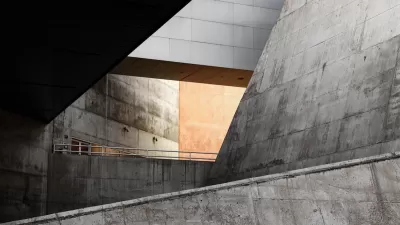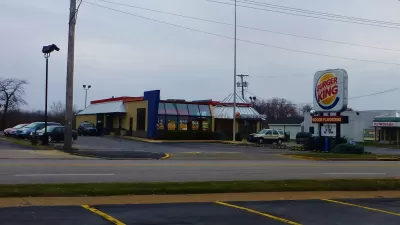Gina Kolata reports on the findings of two new studies that question the very concept of food deserts in poor neighborhoods, and the connection between fresh food access and obesity.
The idea that many poor urban neighborhoods lack access to fresh food (food desert), which contributes to childhood obesity rates in such areas, has become a common cause driving planning and policy makers across the country, including Michelle Obama's signature Let's Move campaign. As Kolata reports, two new studies have raised serious questions about the premise behind both ideas.
Helen Lee, of the Public Policy Institute of California, published a study in the March issue of Social Science and Medicine, questioning the common occurrence of food deserts in poor urban neighborhoods. "Poor neighborhoods, Dr. Lee found, had nearly twice as many fast food restaurants and convenience stores as wealthier ones, and they had more than three times as many corner stores per square mile. But they also had nearly twice as many supermarkets and large-scale grocers per square mile."
The other study mentioned in the article focused on the connection between fresh food access and childhood obesity rates. That study, authored by Roland Sturm of the RAND Corporation, and published in February in The American Journal of Preventive Medicine, "found no relationship between what type of food students said they ate, what they weighed, and the type of food within a mile and a half of their homes," writes Kolata.
Although "Some experts say these new findings raise questions about the effectiveness of efforts to combat the obesity epidemic simply by improving access to healthy foods," the goal of increasing access to fresh foods is just one of a host of efforts intended to combat America's obesity epidemic. Mrs. Obama's initiative, for example, also stresses improving food in schools, increasing physical education time, and educating people on the importance of healthy diets, as Kolata notes.
FULL STORY: Studies Question the Pairing of Food Deserts and Obesity

What ‘The Brutalist’ Teaches Us About Modern Cities
How architecture and urban landscapes reflect the trauma and dysfunction of the post-war experience.

‘Complete Streets’ Webpage Deleted in Federal Purge
Basic resources and information on building bike lanes and sidewalks, formerly housed on the government’s Complete Streets website, are now gone.

The VW Bus is Back — Now as an Electric Minivan
Volkswagen’s ID. Buzz reimagines its iconic Bus as a fully electric minivan, blending retro design with modern technology, a 231-mile range, and practical versatility to offer a stylish yet functional EV for the future.

Healing Through Parks: Altadena’s Path to Recovery After the Eaton Fire
In the wake of the Eaton Fire, Altadena is uniting to restore Loma Alta Park, creating a renewed space for recreation, community gathering, and resilience.

San Diego to Rescind Multi-Unit ADU Rule
The city wants to close a loophole that allowed developers to build apartment buildings on single-family lots as ADUs.

Electric Vehicles for All? Study Finds Disparities in Access and Incentives
A new UCLA study finds that while California has made progress in electric vehicle adoption, disadvantaged communities remain underserved in EV incentives, ownership, and charging access, requiring targeted policy changes to advance equity.
Urban Design for Planners 1: Software Tools
This six-course series explores essential urban design concepts using open source software and equips planners with the tools they need to participate fully in the urban design process.
Planning for Universal Design
Learn the tools for implementing Universal Design in planning regulations.
City of Albany
UCLA Lewis Center for Regional Policy Studies
Mpact (formerly Rail~Volution)
Chaddick Institute at DePaul University
City of Piedmont, CA
Great Falls Development Authority, Inc.
HUDs Office of Policy Development and Research



























